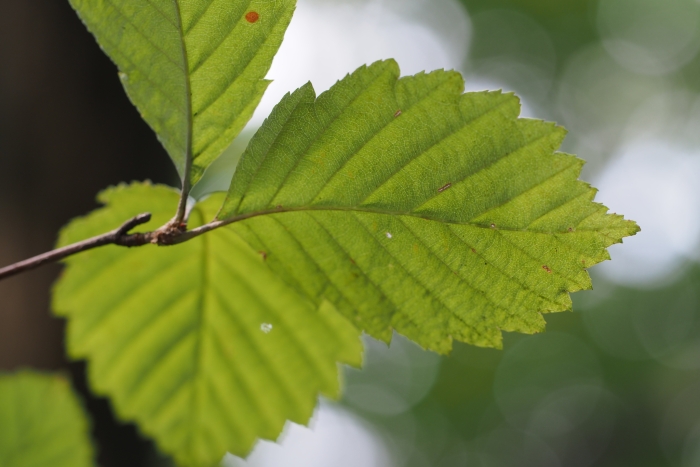Japanese Alder
(Alniaria japonica)
Japanese Alder (Alniaria japonica)
/
/

© harum.koh
CC BY-SA 4.0
Image By:
© harum.koh
Recorded By:
Copyright:
CC BY-SA 4.0
Copyright Notice:
Photo by: © harum.koh | License Type: CC BY-SA 4.0 | License URL: http://creativecommons.org/licenses/by-sa/4.0/ | Uploader: harumkoh | Publisher: iNaturalist |





Estimated Native Range
Summary
Alniaria japonica, commonly known as Japanese Alder, is a deciduous tree native to riparian zones, wetlands, and moist forests in Eastern Asia, particularly in Japan. It typically grows to a height of 10-12 feet (3-3.7 meters) and a width of 3-4 feet (0.9-1.2 meters). Japanese Alder has a conical shape with a straight trunk and smooth gray bark. Its leaves are oval-shaped with serrated margins, and it produces catkins which are not particularly showy. The flowers are monoecious, with separate male and female catkins on the same tree. The male catkins are long and yellowish-brown, appearing before the leaves in early spring, while the female catkins are smaller and greenish. After pollination, the female catkins develop into small woody cones that persist through winter.
Japanese Alder is valued for its ability to thrive in wet conditions and is often used for reforestation projects and erosion control due to its robust root system. It is also planted in urban areas for its tolerance to pollution and compacted soils. In cultivation, it prefers full sun to part shade and requires medium amounts of water, with a preference for moist, well-drained soils. It is not known for any popular garden cultivars but is appreciated for its ecological benefits, such as improving soil fertility through nitrogen fixation. Potential problems include alder blight and canker, which can affect the health of the tree.CC BY-SA 4.0
Japanese Alder is valued for its ability to thrive in wet conditions and is often used for reforestation projects and erosion control due to its robust root system. It is also planted in urban areas for its tolerance to pollution and compacted soils. In cultivation, it prefers full sun to part shade and requires medium amounts of water, with a preference for moist, well-drained soils. It is not known for any popular garden cultivars but is appreciated for its ecological benefits, such as improving soil fertility through nitrogen fixation. Potential problems include alder blight and canker, which can affect the health of the tree.CC BY-SA 4.0
Plant Description
- Plant Type: Tree
- Height: 10-12 feet
- Width: 3-4 feet
- Growth Rate: Rapid
- Flower Color: N/A
- Flowering Season: Spring, Summer
- Leaf Retention: Semi-deciduous
Growth Requirements
- Sun: Full Sun
- Water: Medium
- Drainage: Medium
Common Uses
Low Maintenance, Salt Tolerant
Natural Habitat
native to riparian zones, wetlands, and moist forests in Eastern Asia, particularly in Japan
Other Names
Common Names: Canary-Shouldered Thorn
Scientific Names: , Alniaria japonica, Aria japonica, Sorbus japonica var. calocarpa, Micromeles japonica, Aria japonica f. denudata, Sorbus japonica var. denudata, Aria japonica f. calocarpa, Pyrus morrisiana, Sorbus japonica subsp. calocarpa
GBIF Accepted Name: Alniaria japonica (Sieb.) Rushforth